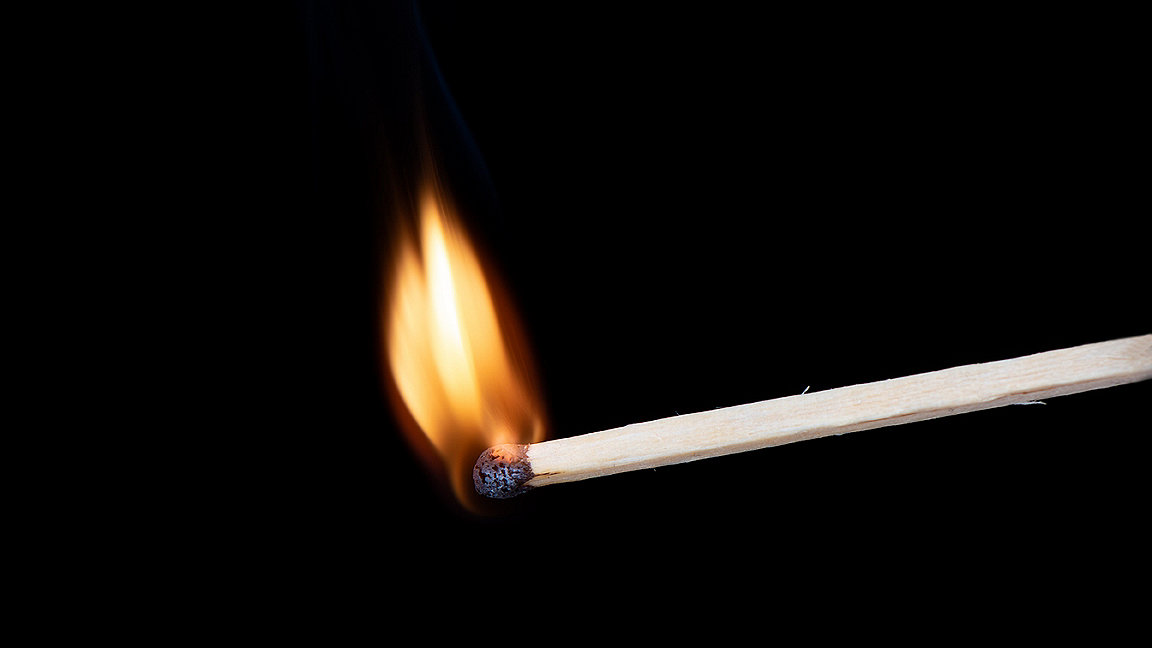
Due to the excessive and inevitable dust produced during construction projects at existing properties, it has historically been common practice to bag smoke-detecting fire alarms – as they would otherwise be easily and frequently activated.
'Bagging' is exactly what you would imagine: a plastic bag is wrapped around the detector and then taped in place, preventing dust from triggering the entire building's fire detection system. However, while it stops accidental activation, it also means there will be no early warning should a fire actually break out during the works.
Increasing concern
Events such as the blaze in a new-build portion of the world's largest vaccine producer in western India in January, which killed five workers, have raised questions about how fire safety is managed during construction projects. Aside from the loss of life, it is estimated that the blaze also caused £100m in damage due to the loss of equipment and revenue.
In addition, a recent article by the Fire Industry Association, based on Home Office statistics, identified a 9.6% increase in the number of reported fires on construction sites in England between 2014 and 2019.
Although research to establish the context and severity of these fires is ongoing, it is clear that there is a need for insurers and the industry as a whole to think more about fire detection on site.
Regulation and guidance
There is already extensive regulation and guidance for assessing fire risks on site that surveyors can use to help determine what type of detection is required. The Regulatory Reform (Fire Safety) Order 2005 requires construction sites in England and Wales to appoint a 'responsible person' to ensure that fire safety is assessed and maintained. This person must make sure that the procedures, measures, and safety standards in the site's fire safety plan are both understood and implemented by everyone on site, including visitors such as contractors.
Further key guidance includes the Fire Protection Association (FPA) Fire Prevention on Construction Sites: The Joint Code of Practice, the most recent edition of which was published in 2015 and which is now being revised.
Meanwhile, the Health and Safety Executive's guidance on the permit-to-work system requires construction sites to have a waking watch patrol or fire warden during hot works such as grinding or welding, as well as for a period of time afterwards. The principal designer or fire warden should stipulate the duration for which the area is monitored after completion to ensure any ignition source is identified and quenched.
Furthermore, the Construction (Design and Management) Regulations (CDM) 2015 oblige contractors to provide their employees and workers with information about the procedures to be followed to minimise and manage risk. This includes steps to prevent the risk of injury arising from fire, with appropriate detection and firefighting equipment in suitable locations.
- Wireless detection: where existing systems cannot be completely isolated, wireless fire detection can be installed. This includes dust-resistant smoke detectors, manual call points and sounders that can be incorporated into the existing system via repeater panels. However, such systems must be able to collect, analyse, and interpret data it receives from its sensors, in order to prevent false alarms being sounded. This helps improve and extend their functionality, ensuring that occupants and building are adequately protected.
- Battery-operated detection: these systems comprise self-contained manual call points, with 110dB alarms when manually activated. They are ideal for construction sites where a fixed fire alarm system would not be practical. To provide site-wide coverage, the individual call points must be interlinked with a fixed cable, allowing the repeater panel to identify where the detector has been activated, and alerting occupants of the site and building to evacuate.
- Adapted systems: existing systems can be retained in full working order; however, any dust-sensitive smoke detectors would need to be replaced with more robust, dust-resistant ones, or with an infrared heat-detecting variant. Adapting existing systems presents its own challenges all the same: for example, their age may prevent integration of more modern detectors.
Future considerations
Construction works will always present a risk to property in one form or another, the most severe being the loss of life and the building in a fire.
Following the Grenfell Tower disaster, fire safety has correctly become a focal point for all built environment professional bodies. RICS, for instance, has led the establishment of the UN-adopted International Fire Safety Standards.
The FPA Code of Practice meanwhile has the backing of insurers and the construction industry. Its guidance presents best practice and applies to activities carried out before and during procurement, design, and construction. On larger projects, insurers will normally require compliance with the latest version of the code, and failure to comply can lead to claims being rejected.
Battery-operated, wireless or adapted systems offer only a limited range from which to choose when installing alternatives on site during construction works. However, with the growth and development of digital technologies that enable remote operation and detection, systems using thermal camera detection during a construction project, for instance, will become more commonplace as best practice standards improve and technology becomes more readily available and easy to install and operate.
'Construction works will always present a risk to property in one form or another, the most severe being the loss of life and the building in a fire'
Richard Crow FRICS is a senior associate director at Trident Building Consultancy
Contact Richard: Email
Related competencies include: Fire safety
